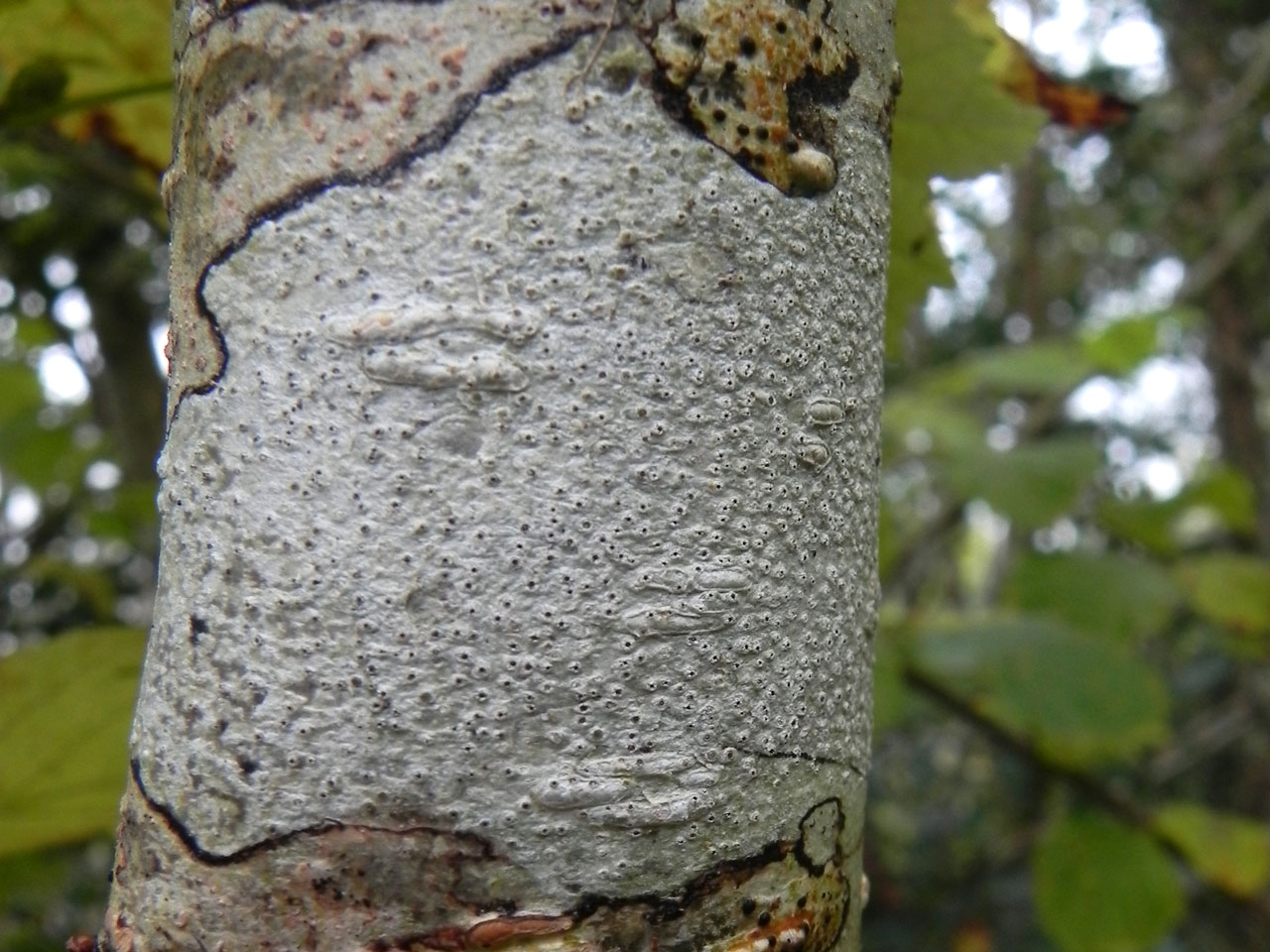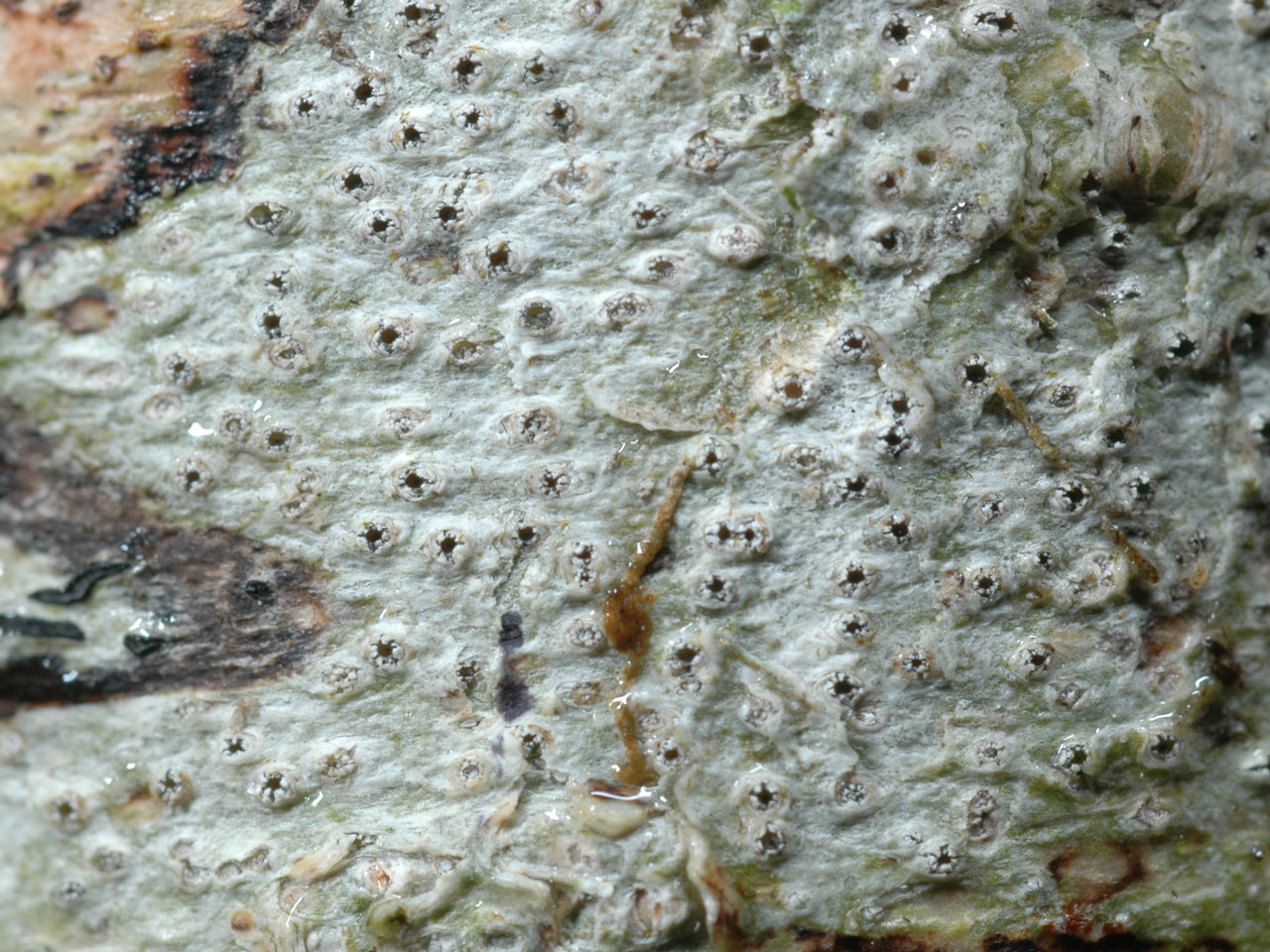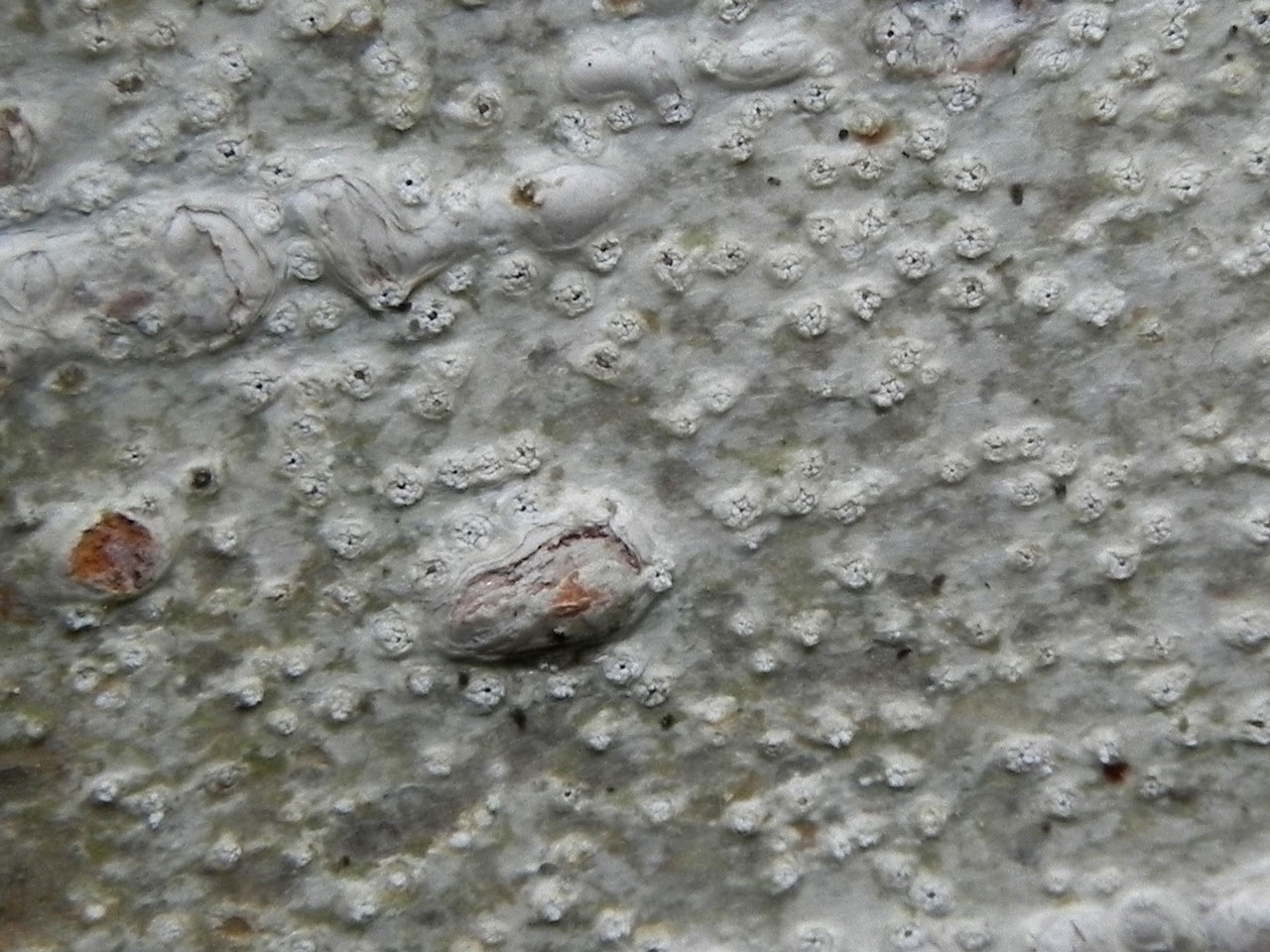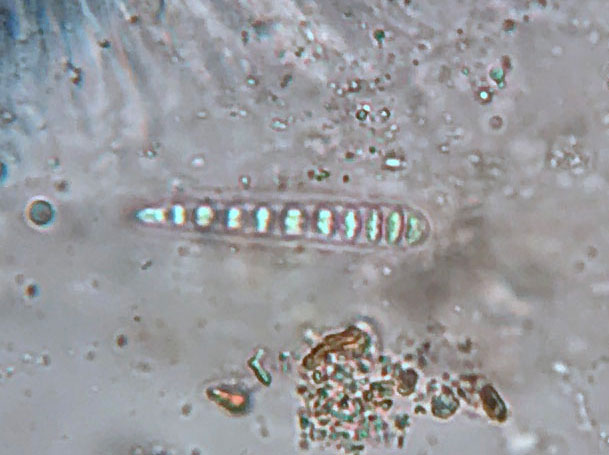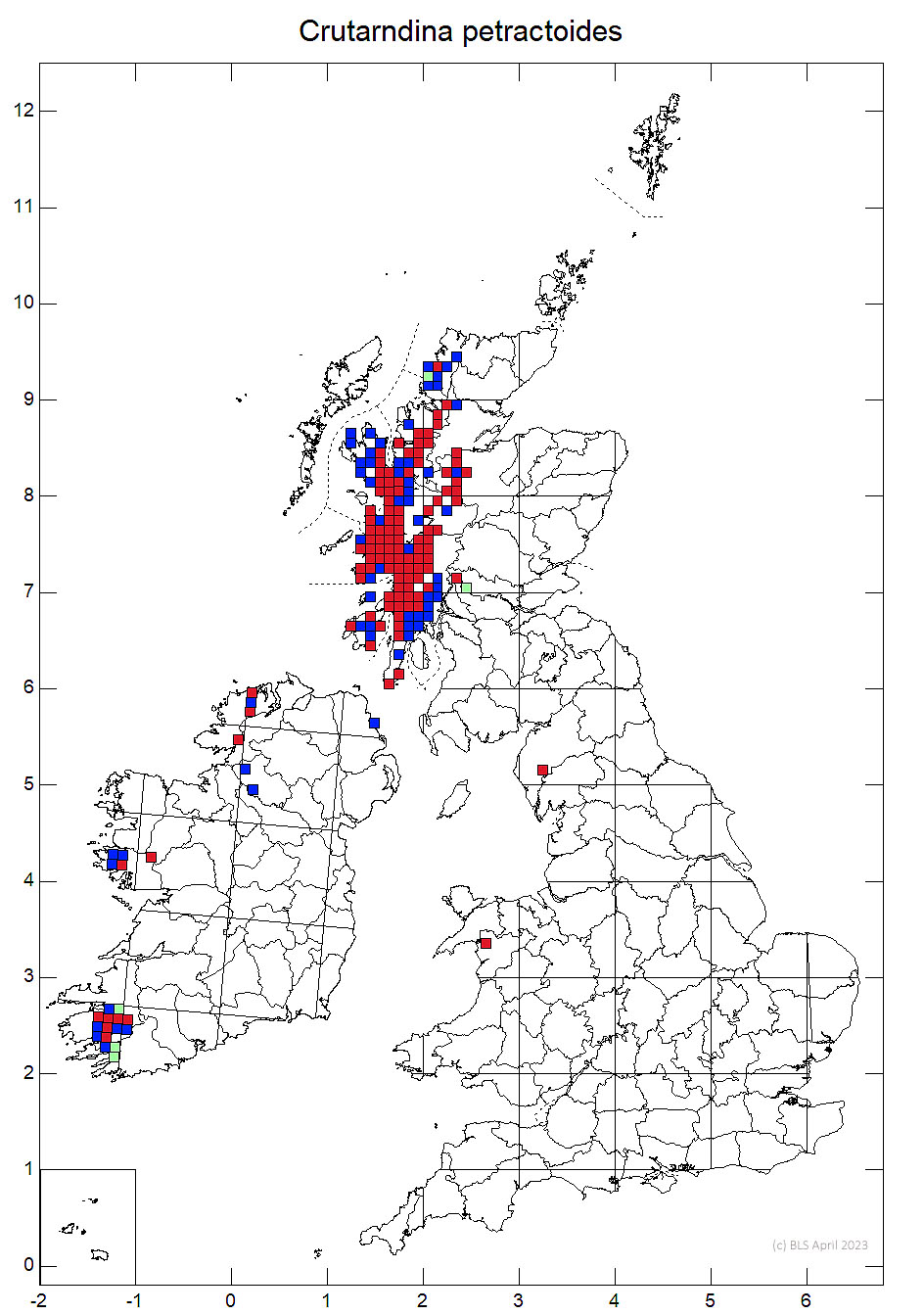Crutarndina petractoides
A magical species found in the best temperate rainforest in the west of Britain and Ireland, where it can be locally frequent. Resembles a small Thelotrema lepadinum that has had its fertile warts violently levelled resulting in a distinctive flattened fertile warts and an eroding thalline margin.
Thallus cream, white or pale ochraceous, uniformly thin, somewhat immersed, ± continuous, cortex an ill-defined superficial layer of necrotic cells mixed with sloughed bark cells interspersed with calcium oxalate crystals; prothallus absent. Soredia and isidia absent. Photobiont Trentepohlia. Apothecia 0.4– 0.7 (–0.8) mm diam., flattened, not immersed in warts, erumpent, urceolate; ostiolar opening to 0.3 mm diam.; true exciple free, white, ± radially stellate-lacerate, partly obscuring the black to ± densely grey-white pruinose apothecial disc; hymenium (90–) 100–120 (–130) µm, colourless, I–; hypothecium colourless; epithecium colourless to pale brown, encrusted with numerous small irregular crystals. Hamathecium of filamentous unbranched, rarely septate paraphyses; periphysoids lining the upper inner surface of the true exciple. Asci subcylindrical, with a single functional wall layer, abruptly thickened at the apex, sometimes with a minute internal apical beak, K/I–, (4-) 6- to 8-spored. Ascospores (30–) 35–50 (–55) × (7–) 8–10 µm, cylindrical to broadly cylindric-fusiform with rounded ends, remaining colourless when mature, with (7–) 9–11 (–12) strongly thickened lateral distosepta and no longitudinal septa, I+ purplish blue, with a perispore that is constricted at the septa. Conidiomata not known. Thallus C–, K–, KC–, Pd–, UV– (no lichen products detected by TLC).
The flattened apothecia that are ± level with the thallus surface, with a well-developed, stellate-lacerate true exciple and pruinose disc, plus the eroding thalline margin are useful field characters separating this species from Thelotrema lepadinum. British specimens were previously referred to T. subtile but this species appears to be restricted to eastern N. America.
The species is occasionally infested by Opegrapha brevis.
An oceanic species on ± shaded, smooth bark, mainly of Corylus and Sorbus, more rarely of other broadleaved trees, in sheltered woodlands and boggy areas in temperate rainforests.

Very locally abundant. W. Scotland, W. & S.W. Ireland, very rare in N. Wales and Cumbria.
An obligate temperate rainforest species in Britain and Ireland, which is locally frequent in the western Highlands and inner Hebrides and in the mountains of Muster in south west Ireland but a very rare and threatened possible relic species in the rest of western Ireland, north Wales and the Lake District, England.
Britain: Notable & International Responsibility species
Wales: not assessed
Aptroot, A., Weerakoon, G., Cannon, P., Coppins, B., Sanderson, N. & Simkin, J. (2023). Ostropales: Graphidaceae, including the genera Allographa, Clandestinotrema, Crutarndina, Diploschistes, Fissurina, Graphis, Leucodecton, Phaeographis, Schizotrema, Thelotrema and Topeliopsis. Revisions of British and Irish Lichens 36: 1-23.
Text by Neil A. Sanderson based on Aptroot et al (2019)
